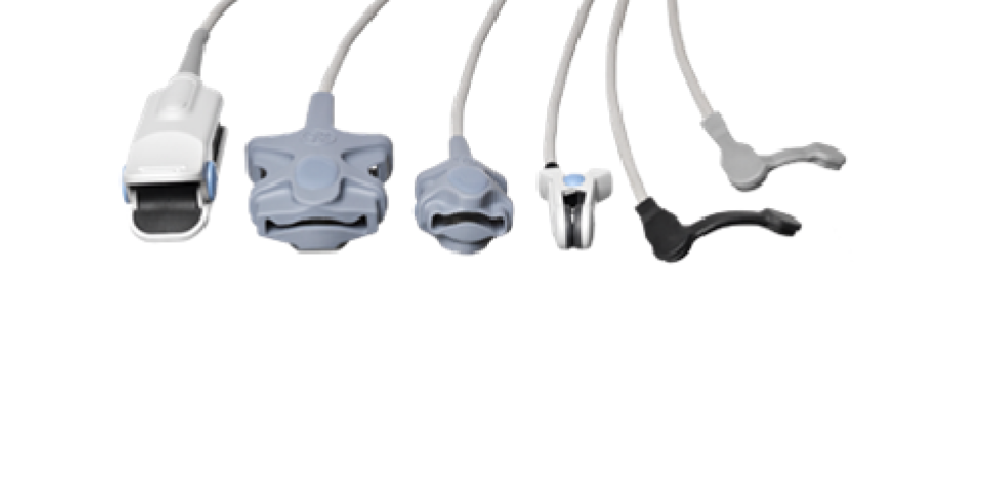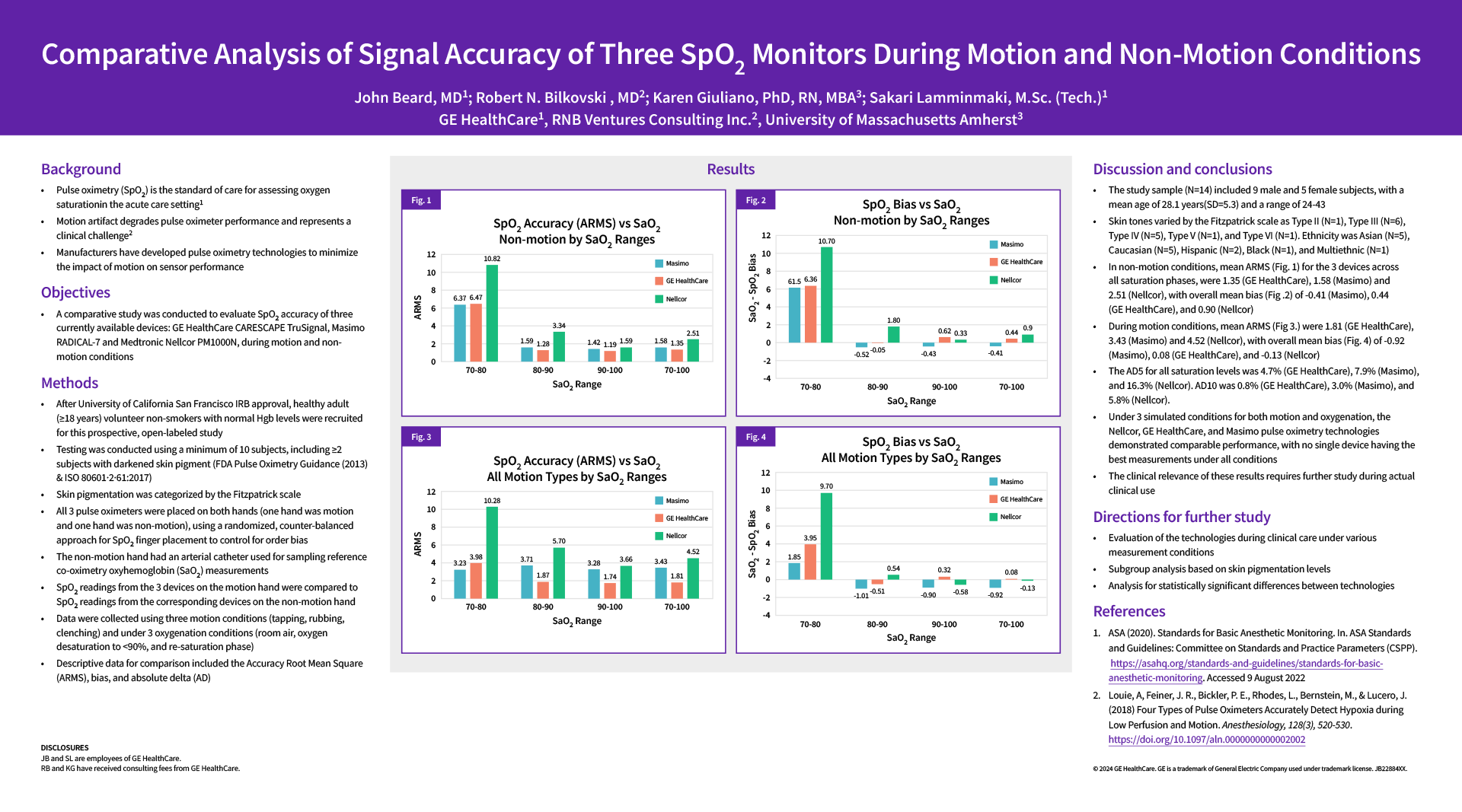Background
- Pulse Oximetry (SpO2) is the standard of care for assessing oxygen saturation in the acute care setting1
- Motion artifact degrades pulse oximeter performance and represents a clinical challenge2
- Manufacturers have developed pulse oximetry technologies to minimize the impact of motion on sensor performance
Objectives
- A comparative study was conducted to evaluate SpO2 accuracy of three currently available devices: GE CARESCAPE TruSignal, Masimo RADICAL-7 and Medtronic Nellcor PM1000N, during motion and non-motion conditions.
Methods
- After University of California San Francisco IRB approval, healthy adult (≥18 years) volunteer non-smokers with normal Hgb levels were recruited for this prospective, open-labeled study
- Testing was conducted using a minimum of 10 subjects, including ≥2 subjects with darkened skin pigment (FDA Pulse Oximetry Guidance (2013) & ISO 80601-2-61:2017)
- Skin pigmentation was conducted using a categorized by the Fitzpatrick scale
- All 3 pulse oximeters were placed on both hands (one hand was motion and one was non-motion), using a randomized, counter-balanced approach for SpO2 finger placement to control for order bias
- The non-motion hand had an arterial catheter used for sampling reference co-oximetry oxyhemoglobin (SaO2) measurements
- SpO2 readings from the 3 devices on the motion hand were compared to SpO2 readings from the corresponding devices on the non-motion hand
- Data were collected using three motion conditions (tapping, rubbing, clenching) and under 3 oxygenation conditions (room air, oxygen desaturation to <90%, and re-saturation phase)
- Descriptive data for comparison included the Accuracy Root Mean Square (ARMS), bias, and absolute delta (AD)
Results
- Fig. 1: SpO2 Accuracy (ARMS) vs SaO2. Non-motion by SaO2 ranges
- Fig. 2: SpO2 Bias vs SaO2. Non-motion by SaO2 ranges
- Fig. 3: SpO2 Accuracy vs. SaO2. All motion types by SaO2 ranges
- Fig.4: SpO2 Bias vs SaO2. All motion types by SaO2 ranges
Discussion and Conclusions
- The study sample (N=14) included 9 male and 5 female subjects, with a mean age of 28.1 years (SD=5.3) and a range of 24-43
- Skin tones varied by the Fitzpatrick scale as Type II (N=1), Type III (N=6), Type IV (N=5), Type V (N=1), and Type VI (N=1). Ethnicity was Asian (N=5), Caucasian (N=5), Hispanic (N=2), Black (N=1), and Multiethnic (N=1)
- In non-motion conditions, mean AEMS (Fig. 1) for the 3 devices across all saturation phases, were 1.35 (GW), 1.58 (Masimo) and 2.51 (Nellcor), with overall mean bias (Fig.2) of -041,(Masimo), 0.44(GE), and 0.90 (Nellcor)
- During motion conditions, mean ARMS (Fig 3.) were 1.81 (GE), 3.43 (Masimo) and 4.52 (Nellcor), with overall mean bias (Fig.4) of -0.92 (Masimo), 0.08 (GE), and -0.13 (Nellcor)
- The AD5 for all saturation levels was 4.7%(GE), 7.9% (Masimo), and 16.3% (Nellcor). AD10 WAS 0.8% (GE), 3.0% (Masimo), and 5.8% (Nellcor)
- Under 3 simulated conditions for both motion and oxygenation, the Nellcor, GE, and Masimo pulse oximetry technologies demonstrated comparable performance, with no single device having the best measurements under all conditions
- The clinical relevance of these results requires further study during actual clinical use
Directions for further study
- Evaluation of the technologies during clinical care under various measurements conditions
- Subgroup analysis based on skin pigmentation levels
- Analysis for statistically significant differences between technologies
References
- ASA. (2020). Standards for Basic Anesthetic Monitoring, In. ASA Standards and Guidelines: Committee on Standards and Practice Parameters (CSPP). https://www.asahq.org/standards-and-guidelines/standards-for-basic-anesthetic-monitoring. Accessed 9 August, 2022
- Louie, A, Feiner, J-R-, Bickler, P.E., Rhodes, L., Bernsteing, M., & Lucero, J. (2018). Four Types of Pulse Oximeters Accurately Detect Hypoxia during Low Perfusion and Motion. Anesthesiology, 128(3), 520-530. https://doi.org/10.1097/aln.0000000000002002
Disclosures
JB and SL are employees of GE HealthCare
RB and KG have received consulting fees from GE HealthCare










